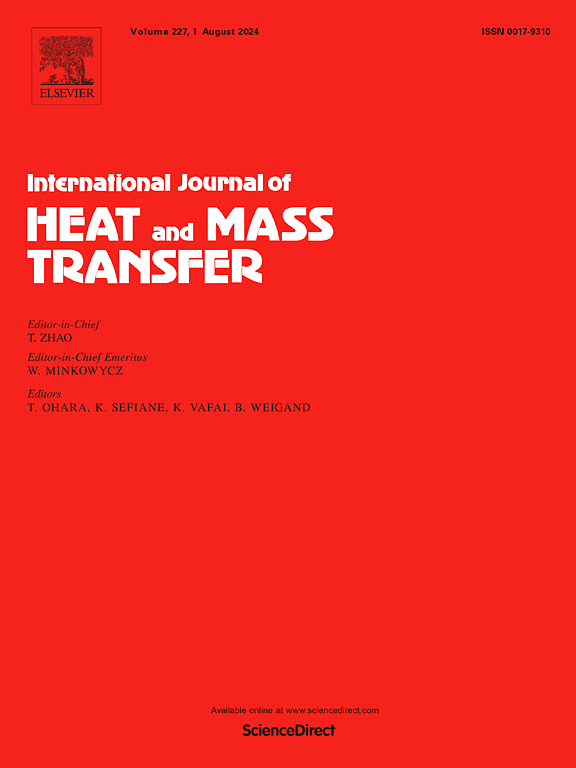Thermal-dynamic performance enhancement analysis on central impinging jet double layer microchannel heat sinks with variable working flow conditions verified by SLM 3D printing technology for the powerful electronics cooling system
IF 5
2区 工程技术
Q1 ENGINEERING, MECHANICAL
International Journal of Heat and Mass Transfer
Pub Date : 2024-10-29
DOI:10.1016/j.ijheatmasstransfer.2024.126381
引用次数: 0
Abstract
In order to further improve the thermal performance of parallel straight double-layer microchannel heat sinks, the central impinging jet double layer microchannel heat sinks are designed. Six kinds of working flow conditions are examined in the designed structure, the designs feature two inlets and three outlets. Simulations were conducted for all configurations and the corresponding experimental samples made by selective laser melting (SLM) 3D are conducted for verification of the numerical simulations. It is found that the test results for heat transfer performance and pressure drop penalty are in line with the numerical results. Through combining the advantages of impinging jets and double layer structures, the controlling of peak temperature and thermal uniformity on substrate is quite effective. In comparison with parallel straight double-layer microchannel heat sinks, the maximum temperature on substrate in the central impinging jet double layer microchannel heat sinks with optimal working condition decreases significantly. As Re = 580, the Nusselt number of the optimal working conditions reaches 38.18, which increases by 51.86 % compared with the referenced model. Taking the overall thermal performance factor ((Nu/Nu0)/(Δp/Δp0)1/3) as the criterion to evaluate the comprehensive overall thermal performance, the optimal working condition has the value mentioned above up to 1.47 and the thermal resistance is at a very low level. It is worth mentioning that the pressure drop is not significantly increased under various working conditions.
利用 SLM 3D 打印技术验证强力电子设备冷却系统工作流条件可变的中央冲击射流双层微通道散热器的热动力性能提升分析
为了进一步提高平行直线双层微通道散热器的散热性能,设计了中央撞击射流双层微通道散热器。在所设计的结构中研究了六种工作流动条件,这些设计具有两个入口和三个出口。对所有配置进行了模拟,并通过选择性激光熔化(SLM)三维技术制作了相应的实验样品,以验证数值模拟结果。实验结果表明,传热性能和压降损失与数值结果一致。通过结合冲击射流和双层结构的优势,对基底上的峰值温度和热均匀性的控制相当有效。与平行直线双层微通道散热器相比,最佳工况下的中央撞击射流双层微通道散热器基片上的最高温度明显降低。当 Re = 580 时,最佳工况的努塞尔特数达到 38.18,比参考模型提高了 51.86%。以综合热性能系数((Nu/Nu0)/(Δp/Δp0)1/3)作为评价综合热性能的标准,最佳工况的综合热性能系数可达 1.47,热阻处于非常低的水平。值得一提的是,在各种工况下,压降并没有明显增加。
本文章由计算机程序翻译,如有差异,请以英文原文为准。
求助全文
约1分钟内获得全文
求助全文
来源期刊
CiteScore
10.30
自引率
13.50%
发文量
1319
审稿时长
41 days
期刊介绍:
International Journal of Heat and Mass Transfer is the vehicle for the exchange of basic ideas in heat and mass transfer between research workers and engineers throughout the world. It focuses on both analytical and experimental research, with an emphasis on contributions which increase the basic understanding of transfer processes and their application to engineering problems.
Topics include:
-New methods of measuring and/or correlating transport-property data
-Energy engineering
-Environmental applications of heat and/or mass transfer

 求助内容:
求助内容: 应助结果提醒方式:
应助结果提醒方式:


